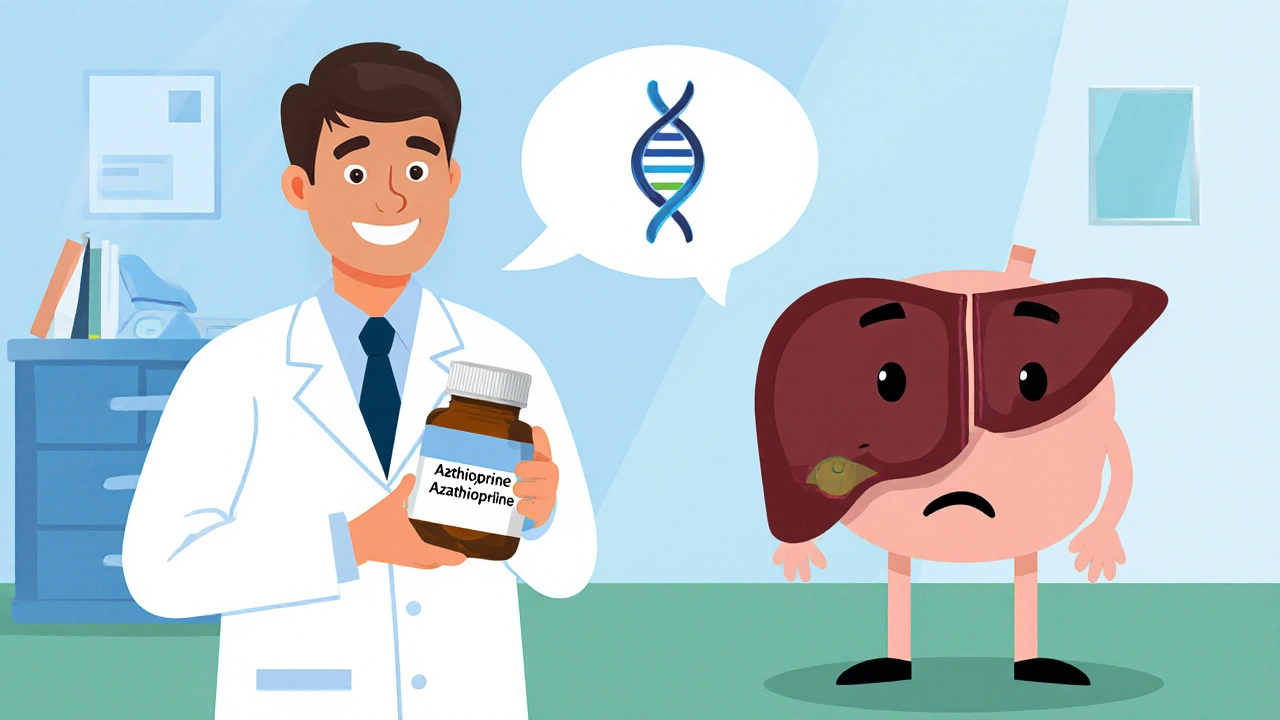Azathioprine-Induced Hepatitis: Causes, Symptoms, and Management
Learn what causes azathioprine‑induced hepatitis, how to spot early signs, and the steps to treat and prevent liver damage while staying on therapy.
Read MoreWhen dealing with immunosuppressant toxicity, the harmful side‑effects that arise from drugs designed to suppress the immune system. Also known as immunosuppression‑related adverse effects, it can jeopardize organ function and patient safety. Patients on these drugs often include organ‑transplant recipients, people with autoimmune disorders, and those receiving chemotherapy. The toxicity spectrum ranges from mild lab abnormalities to serious organ failure, making early detection a critical part of care. Because the immune system is deliberately weakened, any additional stress—like infection or a new medication—can tip the balance toward toxicity. In practice, clinicians watch for signs such as rising creatinine, abnormal liver enzymes, or unexplained fatigue, all of which may signal that the dosing needs adjustment.
Immunosuppressant drugs, medications like tacrolimus, cyclosporine, azathioprine, methotrexate and leflunomide are the primary cause of the toxicity we’re discussing. Each drug has a distinct metabolic pathway, but they share a common risk: they can damage specific organs. Kidney toxicity, characterized by rising serum creatinine and reduced glomerular filtration rate is especially common with calcineurin inhibitors such as tacrolimus. Monitoring requires regular blood draws and sometimes dose reduction or substitution. Liver toxicity, elevated transaminases and bilirubin that may indicate hepatocellular injury shows up more often with azathioprine and leflunomide, so liver function tests are part of the routine panel. Drug interactions, situations where other medicines alter the metabolism of immunosuppressants can amplify both kidney and liver damage; for example, certain antibiotics inhibit CYP3A4, raising tacrolimus levels to toxic ranges. These entities form a web: immunosuppressant toxicity encompasses organ‑specific damage, requires careful monitoring of kidney function, demands liver enzyme checks, and is intensified by drug interactions. Understanding this network helps clinicians prevent serious outcomes and keep patients on life‑saving therapy.
Below you’ll find a curated list of articles that break down each of these pieces in detail—ranging from dosing tips for methotrexate and kidney protection strategies to the latest evidence on leflunomide‑related liver risks. By reading through, you’ll get practical guidance on how to spot early warning signs, adjust treatment plans, and communicate risks to patients. Whether you’re a pharmacist, a transplant coordinator, or just someone looking to understand the hazards of these powerful drugs, the collection offers clear, evidence‑based insights. Keep an eye out for actionable checklists and real‑world case examples that make the science easy to apply. Dive in, and let these resources help you manage immunosuppressant toxicity with confidence.

Learn what causes azathioprine‑induced hepatitis, how to spot early signs, and the steps to treat and prevent liver damage while staying on therapy.
Read More